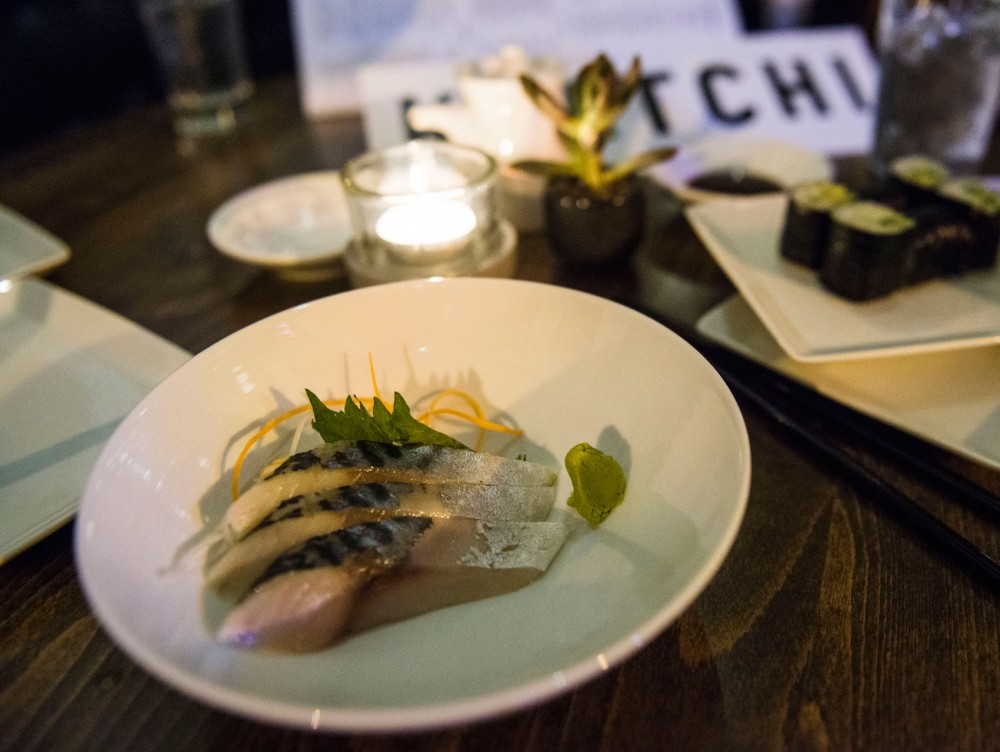Sustainability is one of the new millennium’s top buzzwords, both as a trend and as a marketing tool. It’s now seeping into every pore of our society, with companies as big as Levi’s and Nike attaching the label to their products.
But it’s sometimes the things for which sustainability is most pressing — food, for example — that don’t make the cut.
One example is sushi. Though it became trendy around the same time that sustainability did, the two don’t go hand-in-hand as often as they should.
Minneapolis, however, has seen a barrage of sustainable sushi restaurants open in the past two years, including Sushi Avenue’s Masu and One Two Three (whose claims to sustainability are questionable, due to sourcing).
In mid-February, Kyatchi joined destinations touting the label, raising the question of whether restaurants follow through on their claims or are attempting to draw in foodies and health-conscious diners.
A gray area
According to Coastal Seafoods’ general manager Tim Lauer, sustainability can be boiled down to “harvesting, growing or selling seafood in a manner that allows the continuation of those products.”
Lauer said he thinks customers too often believe sustainability is “black and white,” when in reality it’s based on a number of factors including locale, endangered species. status and purity of aquaculture (For example, farmed salmon escaping into the wild and mating with wild salmon diminishes genetic sustainability.)
The Monterey Bay Aquarium runs a seafood watch program that’s considered a barometer for sustainability.
“They use the stoplight system — green, yellow, red,” said Keane Amdahl, Minnesota’s State Program Administrator for Sustainable Seafood at the Minnesota Zoo.
Under the system, green is considered the best, and red the worst.
Seafood falling under the “red” category is still served around town. Amdahl noted Bluefin tuna, an endangered species that’s considered the “lion of the sea” and is treated as a prized delicacy.
Amdahl said Japanese researchers are claiming to raise sustainable Bluefin tuna — which are raised from eggs in pens — but it’s an oxymoron. For a fish that can weigh up to 700 pounds and regularly swims from Asia to America, it’s tough to be ethically raised in confinement. It was served at Fuji-Ya until 2011, and it’s currently on the menu at Origami.
The amount of fish required to make sushi is eye-opening. Sushi Avenue’s CEO Nay Hla and Director of Marketing Steve Tomasini said they regularly order 60,000-pound shipments of tuna sourced from the Philippines, Vietnam and Indonesia.
For a seemingly large quantity of fish, it doesn’t go very far; it takes three pounds of fish to produce one pound of sushi.
The quality of the fish bought is unequal. Sushi Avenue ships frozen tuna off to supermarkets like Cub Foods to use for their sushi bars.
Hla and Thomasini said that despite this, supermarket sushi is composed of 70 to 80 percent sustainable ingredients.
Sustainable sushi at sustainable prices
There are sushi restaurants in Minneapolis that follow through on their claim to sustainability. Kyatchi is one.
Amdahl said Kyatchi buys their fish from Sea to Table, which means sourcing from small boat fishermen. The fish is packaged and sent to the restaurant the day it’s caught. (But even then there are transportation concerns, given that Minnesota is landlocked.)
Perusing Kyatchi’s menu under their dim lighting, no Bluefin tuna (or other fish of questionable sustainability) was to be found.
Instead, there was an abundance of fish earning high marks through Monterey Bay Aquarium’s research, with mackerel and shrimp dominating the menu.
There are some menu offerings that raise eyebrows, such as eel, rated red by Monterey Bay. Further research is appeasing, as only eel that is farmed rather than caught is given this designation.
At the kitchen’s helm is Chef Hide Tozawa, longtime chef at Fuji-Ya. Tozawa is an inventive seafood aficionado; you won’t find insipid California rolls or middling Philadelphia rolls here. And the menu isn’t limited to sushi — it also features ramen and Japanese-influenced hot dogs.
Start with the Kaiso salad. It features several variants of red and green seaweed, which are complemented by two large cucumber slices. The salad is finished off with dribbles of sesame sauce that provide agreeable oiliness.
The Ebi Mayo Roll is a Philadelphia roll on steroids. Instead of cream cheese, it’s stuffed with cooked white shrimp and Japanese mayonnaise. The mayonnaise tastes like cream cheese, but has an airier texture and doesn’t feel as heavy as Hellman’s.
The saba was the star of the show. Three thin slices of mackerel are laid in a white ceramic bowl. It’s strong without being fishy and is silky-smooth, proverbially melting in your mouth. Eat the shiso leaf garnishing the saba — it’s high in antioxidants and has a bittersweet taste that grows on you.
It’s a tasty, affordable and sustainable restaurant worthy of a special visit — not merely another destination capitalizing on a buzzword.
What: Kyatchi
Where: 3758 Nicollet Ave., Minneapolis
Prices: $3-15
Hours: 4 p.m.-12 a.m. Monday-Thursday, 4 p.m.-1 a.m. Friday, noon-1 a.m. Saturday, noon-12 a.m. Sunday








